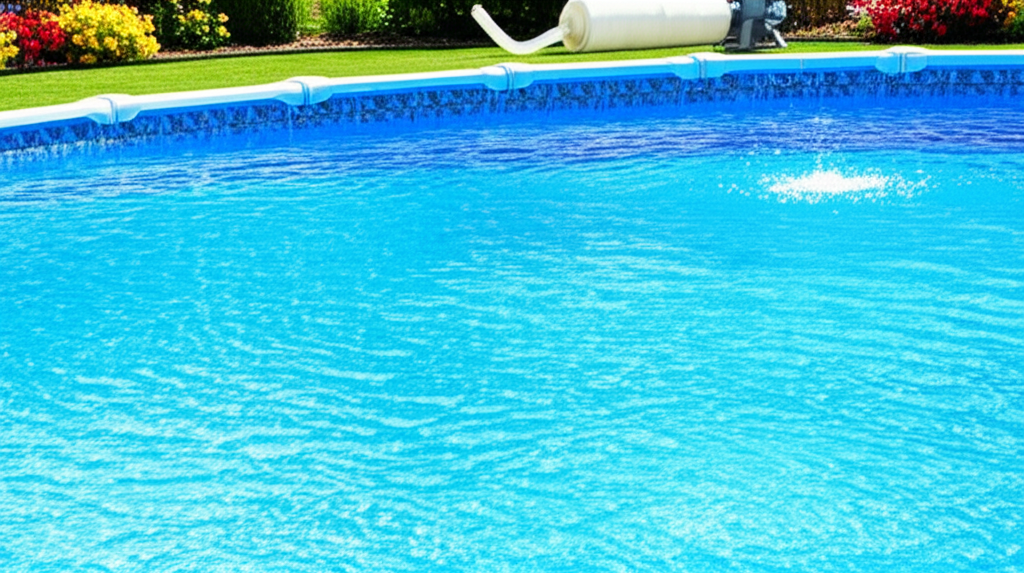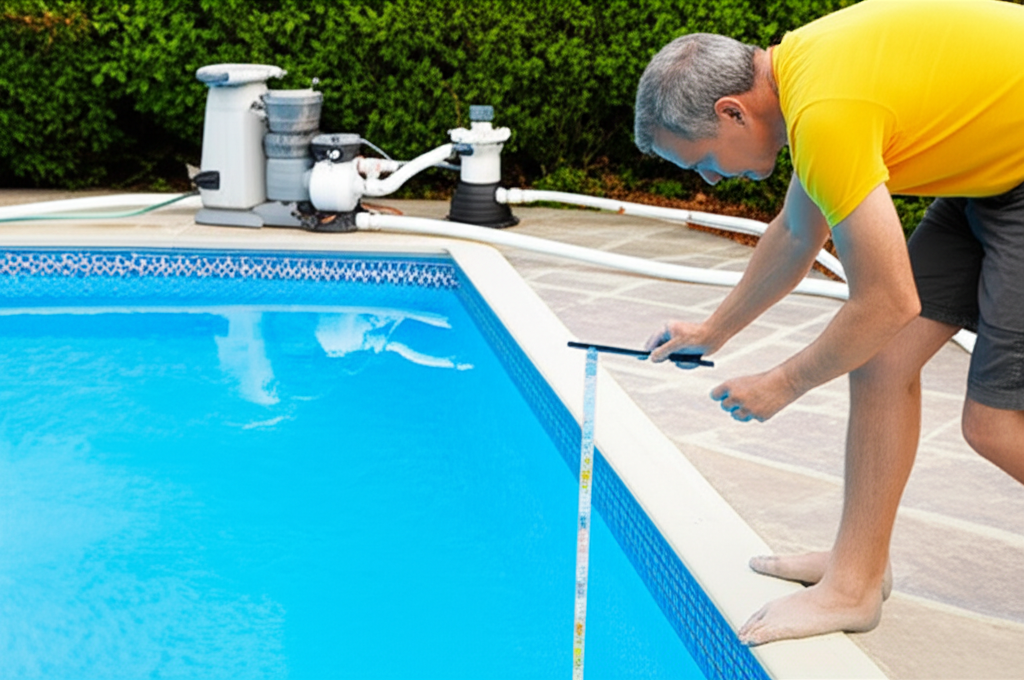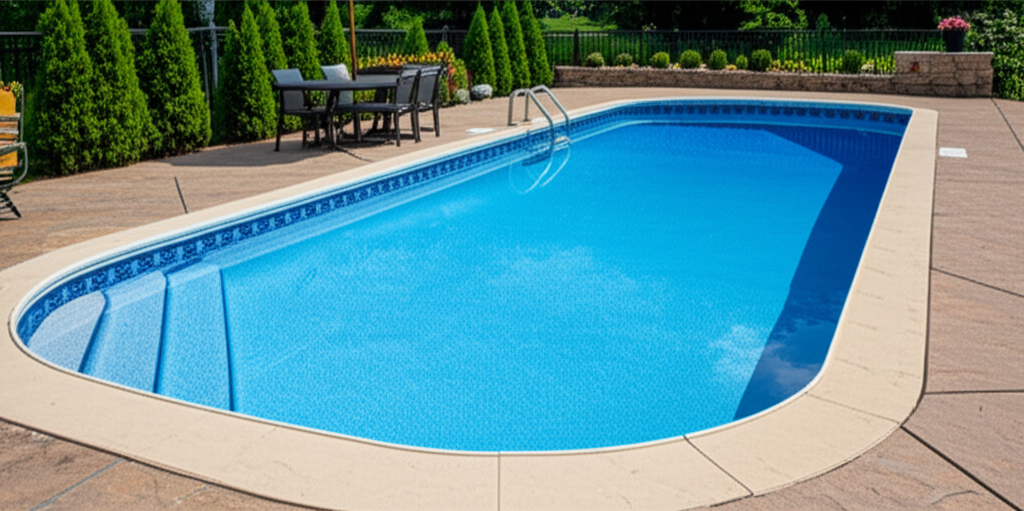- Why Draining Your Pool Isn't Always the Answer
- When to Drain a Pool: Key Scenarios
- What to Consider Before You Drain
- How to Drain Your Pool: A Step-by-Step Guide
When to Drain a Pool is a question many pool owners ponder, often incorrectly assuming it’s an annual ritual. In reality, completely emptying your pool is a significant task that should only be undertaken when absolutely necessary. While regular partial draining for chemistry adjustments is common, a full drain requires planning, an understanding of potential risks, and knowledge of the correct procedure. This ultimate guide will clarify the definitive scenarios that warrant a full pool drain and walk you through the process safely and effectively.
Why Draining Your Pool Isn’t Always the Answer
Before diving into when to drain, it’s crucial to understand why it’s generally avoided unless essential. A full pool of water exerts immense pressure on the pool’s structure, which helps to counteract external forces like groundwater pressure. Emptying it removes this protective weight, making the pool susceptible to damage. Vinyl liners can shrink or wrinkle, fiberglass pools can crack, and concrete pools can even “pop” out of the ground if groundwater pressure beneath the shell is stronger than the empty pool’s weight. Therefore, draining is a last resort, not a routine maintenance step.
When to Drain a Pool: Key Scenarios
There are specific, compelling reasons that necessitate a full pool drain. Understanding these will help you make an informed decision and avoid unnecessary risks.
Severely Imbalanced Water Chemistry (Beyond Repair): This is one of the most common reasons. Over time, certain chemicals accumulate in the water, becoming impossible to dilute or remove through standard testing and treatment.
High Total Dissolved Solids (TDS): When TDS levels exceed 1,500-2,000 ppm (parts per million) above the source water, your chemicals will become less effective, and your water may appear dull or cloudy, even if balanced. The only way to lower TDS is by draining and refilling.
Excessive Cyanuric Acid (CYA): CYA, or conditioner/stabilizer, protects chlorine from UV rays. However, if levels rise above 80-100 ppm, it can “lock up” your chlorine, making it ineffective. Draining is the primary method to reduce high CYA.
Persistent High Calcium Hardness: While some calcium is good, excessively hard water (above 400 ppm for plaster; 200-250 ppm for vinyl/fiberglass) can lead to scaling on surfaces and equipment. Draining is often the most practical solution.
Algae Infestations Beyond Control: While most algae can be treated with chemicals, severe or recurrent black algae or mustard algae infestations that continuously return despite aggressive treatment may warrant draining. This allows for thorough scrubbing and acid washing of surfaces that can eliminate deeply embedded spores.
Major Repairs or Resurfacing: This is a clear-cut reason. Whether you’re replacing a vinyl liner, repairing significant cracks in a fiberglass shell, or resurfacing a concrete pool with new plaster, tile, or paint, the pool must be completely empty.
Relocation of the Pool: If you are physically moving an above-ground or a smaller fiberglass inground pool to a new location, it must be drained.
Contamination: In unfortunate events like sewage overflow, significant chemical spills (e.g., a large quantity of paint or oil), or toxic substances entering the pool, draining and sanitizing becomes the safest option for public health.
What to Consider Before You Drain
Before you pull the plug, a few critical considerations must be addressed.
Check Local Regulations: Many municipalities have rules regarding discharging chlorinated or chemically treated water. You may need to dechlorinate the water before draining, or discharge it into a specific drainage system. Discharging directly into storm drains or natural bodies of water is often prohibited.
Groundwater Pressure: This is perhaps the biggest risk. If the water table is high in your area, an empty pool can be lifted or damaged by hydrostatic pressure. If you suspect high groundwater, consult a pool professional. Some pools have hydrostatic relief valves, but these don’t always guarantee safety.
Weather Conditions: Avoid draining on extremely hot, sunny days, especially if the pool will remain empty for an extended period. The sun can cause vinyl liners to shrink and crack, or plaster to bake and crack. For concrete pools, avoid draining during heavy rain, which can exacerbate groundwater issues.
Time Commitment: Draining a pool takes time, usually several hours to a full day depending on pump capacity and pool size. Refilling can take even longer, potentially days, depending on your water source pressure.
How to Drain Your Pool: A Step-by-Step Guide
Once you’ve determined a drain is necessary and taken precautions, follow these steps for a safe and effective process.
1. Gather Your Equipment: You’ll need a submersible pump (a good quality one can remove water quickly), a garden hose or discharge hose (longer is better for directing water), and possibly a pH testing kit if you need to neutralize the water.
2. Plan Your Drainage Point: Identify a suitable area away from your home’s foundation, septic systems, wells, or a neighbor’s property. Ensure the water won’t cause erosion or collect in an undesirable spot. If required by your municipality, dechlorinate the water first using a chemical like sodium thiosulfate.
3. Position the Submersible Pump: Place the pump at the deepest part of your pool. Attach the discharge hose securely to the pump’s outlet.
4. Start the Pump: Plug in the pump and ensure it’s operating correctly. Check that water is flowing freely from the discharge hose to your planned drainage point.
5. Monitor the Water Level: Keep an eye on the pump, ensuring it’s always submerged and not running dry (which can damage it). For concrete pools, it’s often recommended to leave the last 1-2 feet of water in the deep end until just before repairs or cleaning to maintain hydrostatic pressure. For vinyl liners, complete draining is usually required for replacement.
6. Clean While Empty (If Applicable): If you’re draining for resurfacing or major cleaning, now is the time to scrub away stains or prepare the surface.
7. Refill Promptly: This is critical. Once repairs or cleaning are complete, begin refilling immediately. Do not leave the pool empty for extended periods (more than a few days, ideally much less) to minimize the risk of structural damage from external pressures or sun exposure. As the pool refills, monitor for any leaks or issues.
Draining a pool is not a task to be taken lightly. By understanding when to drain a pool, taking necessary precautions, and following a methodical approach, you can complete the process safely and get your pool back to its sparkling best. When in doubt, always consult with a qualified pool professional.




